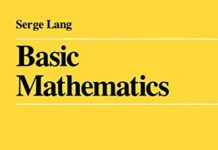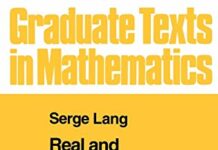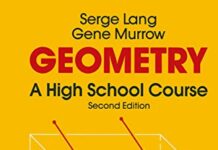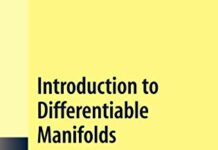
Ebook Info
- Published: 2005
- Number of pages: 401 pages
- Format: PDF
- File Size: 10.90 MB
- Authors: Serge Lang
Description
The companion title, Linear Algebra, has sold over 8,000 copiesThe writing style is very accessibleThe material can be covered easily in a one-year or one-term courseIncludes Noah Snyder’s proof of the Mason-Stothers polynomial abc theoremNew material included on product structure for matrices including descriptions of the conjugation representation of the diagonal group
User’s Reviews
Editorial Reviews: Review From the reviews of the third edition:”As is very typical for Professor Lang’s self demand and style of publishing, he has tried to both improve and up-date his already well-established text. … Numerous examples and exercises accompany this now already classic primer of modern algebra, which as usual, reflects the author’s great individuality just as much as his unrivalled didactic mastery and his care for profound mathematical education at any level. … The present textbook … will remain one of the great standard introductions to the subject for beginners.” (Werner Kleinert, Zentralblatt MATH, Vol. 1063, 2005) From the Back Cover Undergraduate Algebra is a text for the standard undergraduate algebra course. It concentrates on the basic structures and results of algebra, discussing groups, rings, modules, fields, polynomials, finite fields, Galois Theory, and other topics. The author has also included a chapter on groups of matrices which is unique in a book at this level. Throughout the book, the author strikes a balance between abstraction and concrete results, which enhance each other. Illustrative examples accompany the general theory. Numerous exercises range from the computational to the theoretical, complementing results from the main text.For the third edition, the author has included new material on product structure for matrices (e.g. the Iwasawa and polar decompositions), as well as a description of the conjugation representation of the diagonal group. He has also added material on polynomials, culminating in Noah Snyder’s proof of the Mason-Stothers polynomial abc theorem. About the First Edition:The exposition is down-to-earth and at the same time very smooth. The book can be covered easily in a one-year course and can be also used in a one-term course…the flavor of modern mathematics is sprinkled here and there.- Hideyuki Matsumura, Zentralblatt
Reviews from Amazon users which were colected at the time this book was published on the website:
⭐This book has some issues.Cons:1) It has very few examples. This is typical for Abstract Algebra, but this has a lot less then most.2) This book has none of the typical “chatter” and inline discussion that most text books have. This makes it very hard to understand new concepts when reading because it simply does not explain what is happening well. This would have made it a good reference, except for the point I make in 3).3) About half of the theorems are not labeled or named. They are simply stated in inline text with no way to indication that it was a theorem.4) The book does not stay open. It will always close unless you are physically holding it open with something that is quite string.5) The book broke about half way through the semester. The binding is really bad. The cover is only attached to the pages along the side edges, so eventually it will pull off.Pros:1) It has a lot of good questions to work (no solutions, though, which is both good and bad so I count it as neither)2) It is very “to the point” no wasted space or words.
⭐It is a good introduction book to abstract algebra.
⭐It is used heavily
⭐Like all Lang books on algebra, everything is very clear. The book goes through group, ring, modules, field, vector spaces, Galois theory andsome set theory including the Axiom of Choice. It does take some work and time to get everything, especially if you are getting acquainted with the topics for the first time. However, a motivated reader can certainly work through the book by himself. The only complaint I have is that the book often does not explain the motivation much.
⭐Like any of Lang’s texts, it is concise, rigorous, and develops a thought so masterfully that one can even anticipate the reasoning and intuition a few pages in advance. Lang is also the master of nuance. Beware, a love for algebra awaits.
⭐I worked through this text book in order to fill in a few gaps from my undergraduate algebra, before going onto postgraduate masters level study in Maths. I found it hard work, but rewarding. Many important things are covered in exercises, which means, in order to get the most out of the book, all of these need to be attempted. I enjoy this approach, but may not be best suited for someone just looking for a reference text. Especially since there are no solutions widely available (as far as I am aware).For the topics I had covered previously (during my undergraduate degree) it was noticeable that all the fundamental building blocks were covered in a rigorous manner, but without very much in the way of examples/discussion around the applications.Overall, I would say it is an excellent text book for Maths enthusiasts looking to cover the fundamental building blocks of algebra.
⭐Ottimo testo per Algebra I qui in Italia. Preso dopo aver acquistato Algebra dello stesso autore e scoperto non trattarsi di un manuale di ALgebra livello corso di laurea bensi di testo più approfondito e più “personale” nell’impostazione.
⭐
Keywords
Free Download Undergraduate Algebra (Undergraduate Texts in Mathematics) in PDF format
Undergraduate Algebra (Undergraduate Texts in Mathematics) PDF Free Download
Download Undergraduate Algebra (Undergraduate Texts in Mathematics) 2005 PDF Free
Undergraduate Algebra (Undergraduate Texts in Mathematics) 2005 PDF Free Download
Download Undergraduate Algebra (Undergraduate Texts in Mathematics) PDF
Free Download Ebook Undergraduate Algebra (Undergraduate Texts in Mathematics)





